This post continues the story of our Road Scholar tour of the Canadian Maritimes. In Part 1, I told of our rough start and the days of the tour through our visit to Fortress Louisbourg. The post ended at our hotel, Auberge Gisele’s Inn in Baddeck, Nova Scotia.
Wednesday, September 20, 2023: On Wednesday morning, we rose for 7 AM breakfast at the hotel before heading off for the northern part of Cape Breton Island. The highway that circles the northern tip of the island is the world-famous Cabot Trail, named for Italian explorer Giovanni Caboti, better known as John Cabot, who explored Cape Breton Island during his 1497 voyage. Our first stop was in Cheticamp, a picturesque Acadian fishing village where we visited St. Peter’s church and Le Trois Pignons.
When a new Catholic priest was assigned to Cheticamp in 1875, he determined that the area needed a much larger church than existed at that time. He imposed an annual levy on parishioners beginning in 1880, and construction of St. Peter’s was completed in 1893 by expert tradesmen from Quebec. Its vaulted plaster ceilings were completed in 1900, and the ornate altar was added in 1912. At right in the last photo below you can see our excellent guide for the day, a knowledgeable and charming local resident self-nicknamed “Cheryl of Gray Shingles,” singing a hymn for our group.
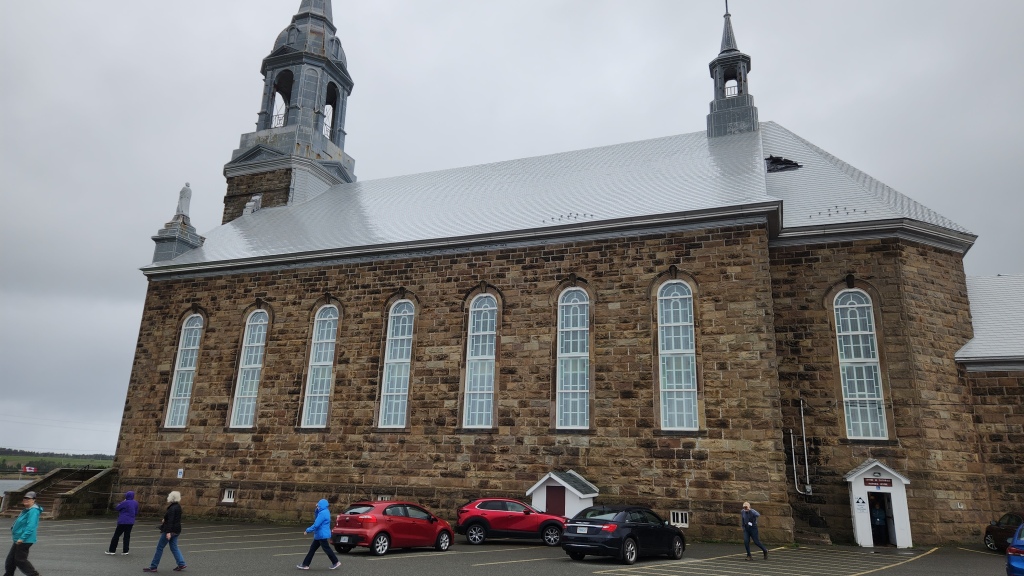
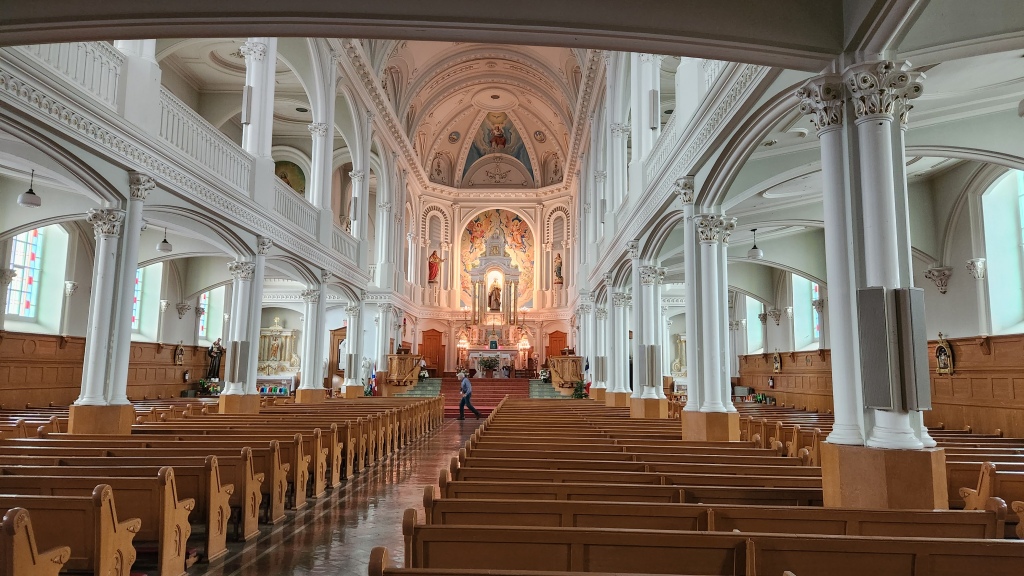
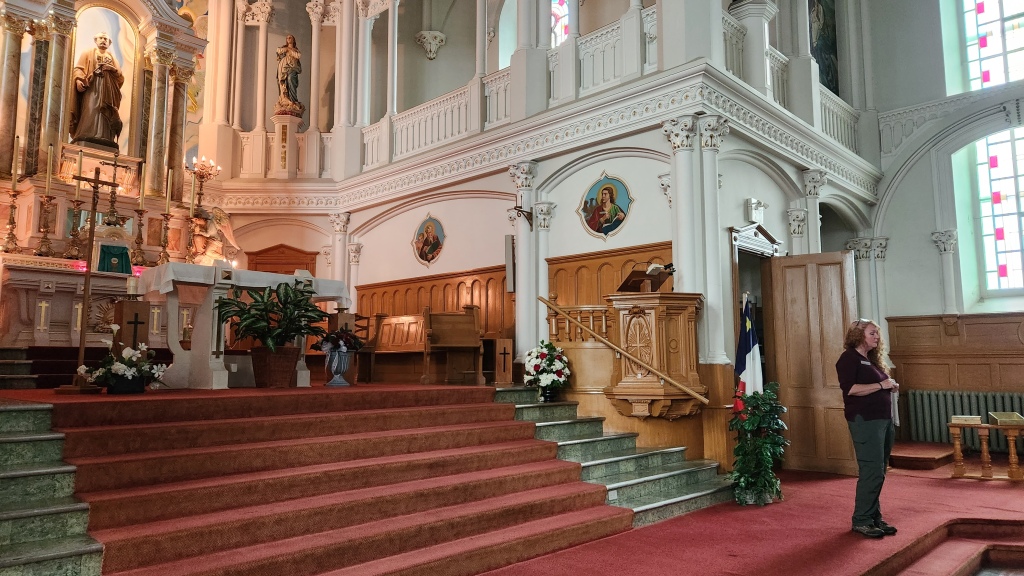
Le Trois Pignons (The Three Gables) is officially known as the Museum of the Hooked Rug and Home Life. It was begun when local resident Marguerite Gallant donated a huge collection of antiques and other artifacts she had collected during her 94-year lifetime. The museum also includes an impressive collection of hooked rugs by local artisans, including Elizabeth LeFort, who began hooking rugs at age 9 and became world famous, continuing to produce amazing rugs until her death in 2001 at age 91.
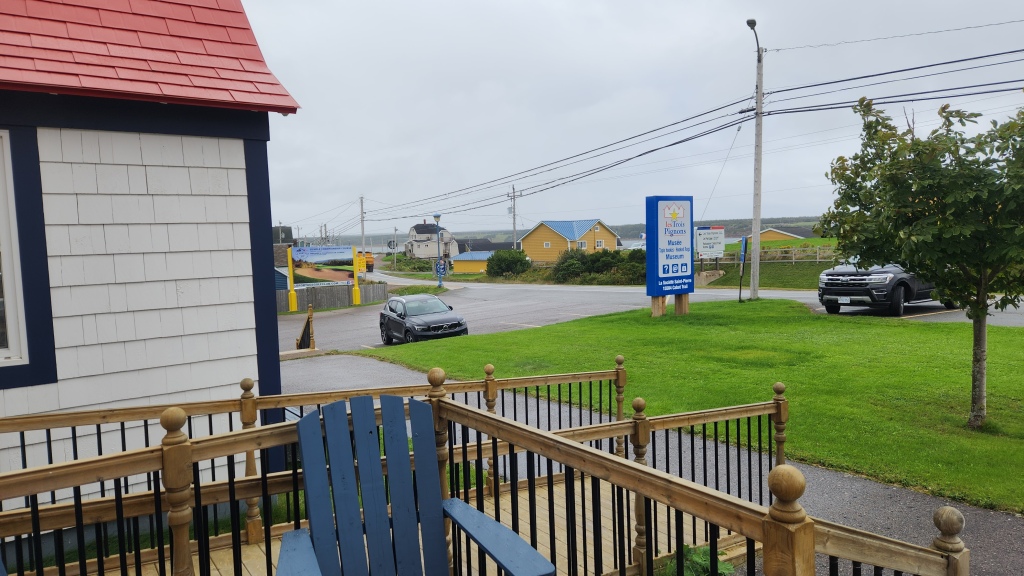
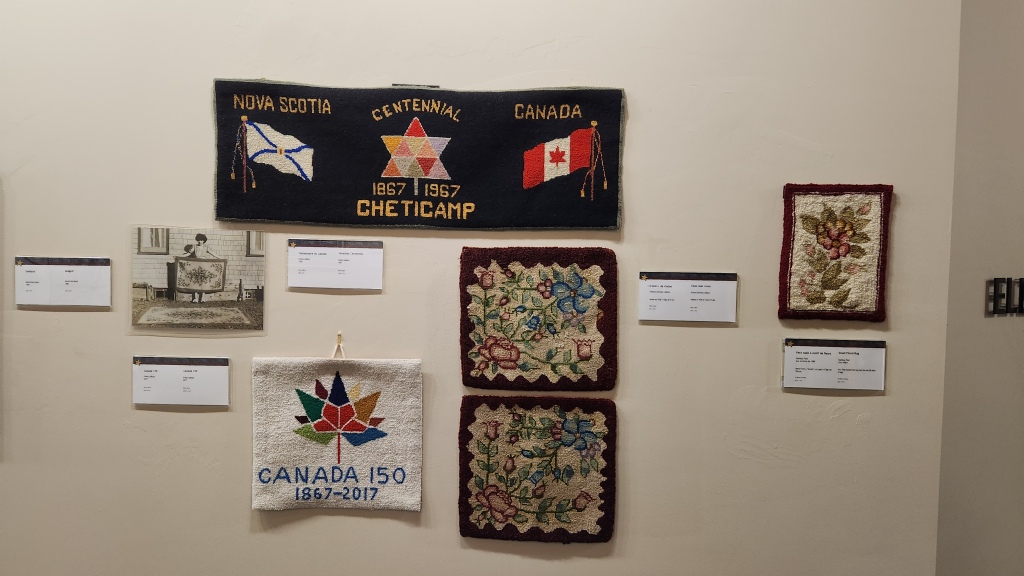

From Cheticamp, we traveled on to Cape Breton Highlands National Park. We made three stops in the park, at a scenic overlook, at the Bog Trail, and at the Macintosh Brook Trail. The scenery was spectacular, and very reminiscent of our earlier trip to Acadia National Park in Maine, although Cape Breton Island has more elevation change as one would expect of “Highlands.”

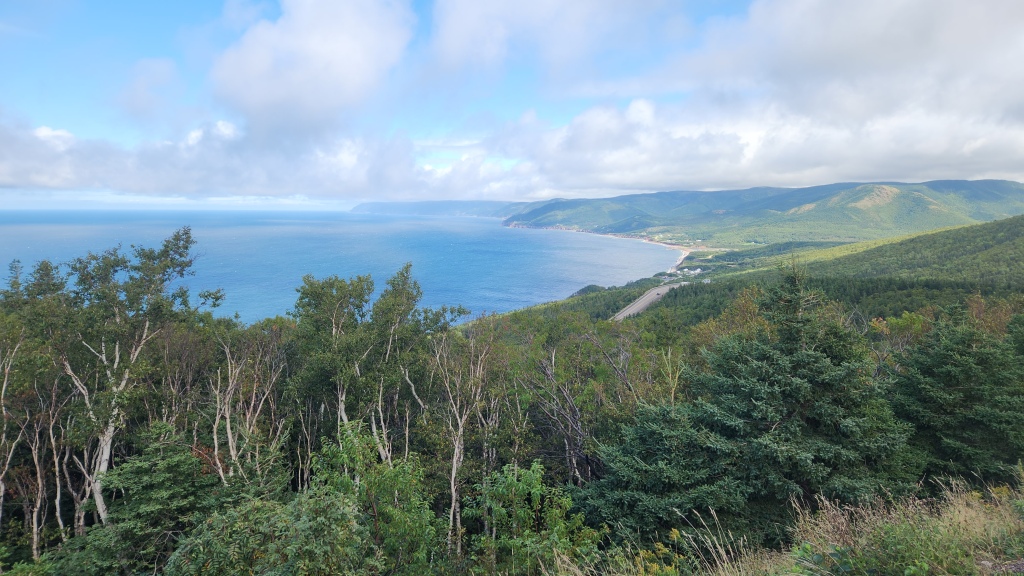
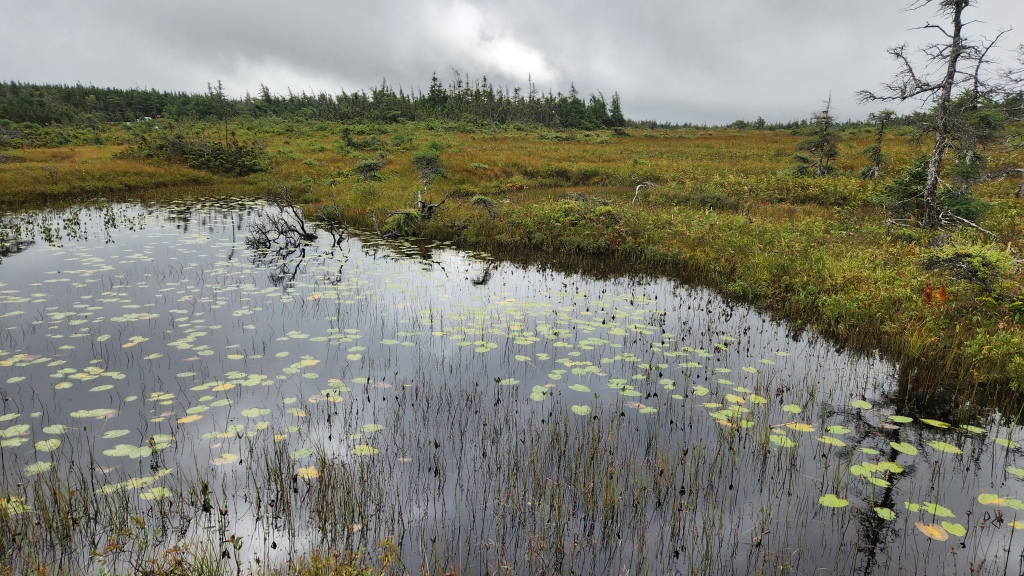


We had a group box lunch at the Macintosh Brook Trailhead (which coincidentally had a bank of chargers supplied by Tesla for their own and other brands of EVs) before driving out of the park again on the Cabot Trail. We then made a brief stop at Ingonish Beach for a final look at the spectacular scenery before heading back to the hotel.
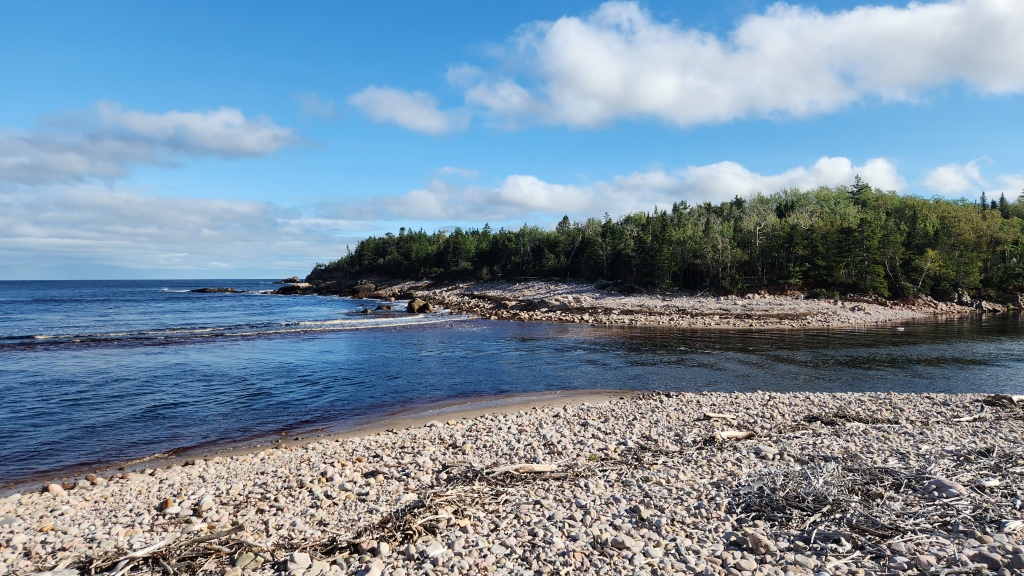

I took particular notice of a lovely golf course near Ingonish appropriately called Cape Breton Highlands Links, rated as the fourth best in Canada and among the top hundred in the world. Hmmm, Tesla charger, great golf course – this may be a good place to go back to in the future.
Back in Baddeck, the group dispersed independently for supper. While most of the group went to various restaurants in town, Pat and I enjoyed the second of those beef bourguignon dinners that the hotel had set aside for us on Monday evening.
Here’s a map of Wednesday’s travels:

Thursday, September 21, 2023: On Thursday, we checked out of Auberge Gisele’s Inn and headed west. Our main stop of the day was in the seaport town of Pictou, where we visited the Hector Heritage Quay. This museum is dedicated to the voyage of the ship Hector, which arrived in Pictou harbor on September 5, 1773, carrying 189 passengers – the first people to emigrate directly from Scotland to Nova Scotia, though earlier ships had brought Scottish emigrants to Prince Edward Island. The Hector passengers were Scots forced off their ancestral lands, enticed by the ship’s owner who promised free passage, a year of free provisions, and a farm on land he had purchased near Pictou. After an arduous, eleven-week voyage, during which 18 passengers died of dysentery and smallpox, the provisions never materialized and the land was unsuitable for farming. Yet the new immigrants managed to survive and become a major part of the future Scottish presence in Nova Scotia. The Hector is currently being restored, as shown in the photo below. It has a long way to go to achieve its former glory as depicted in the companion photo I borrowed from the internet, and our guide at the museum wasn’t shy about sharing details of the ongoing fundraising effort.
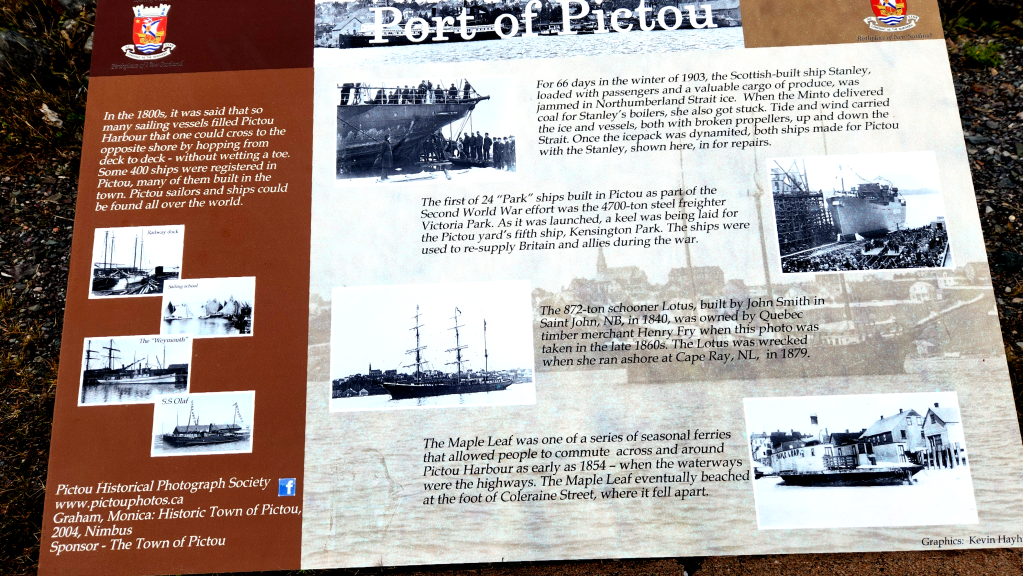
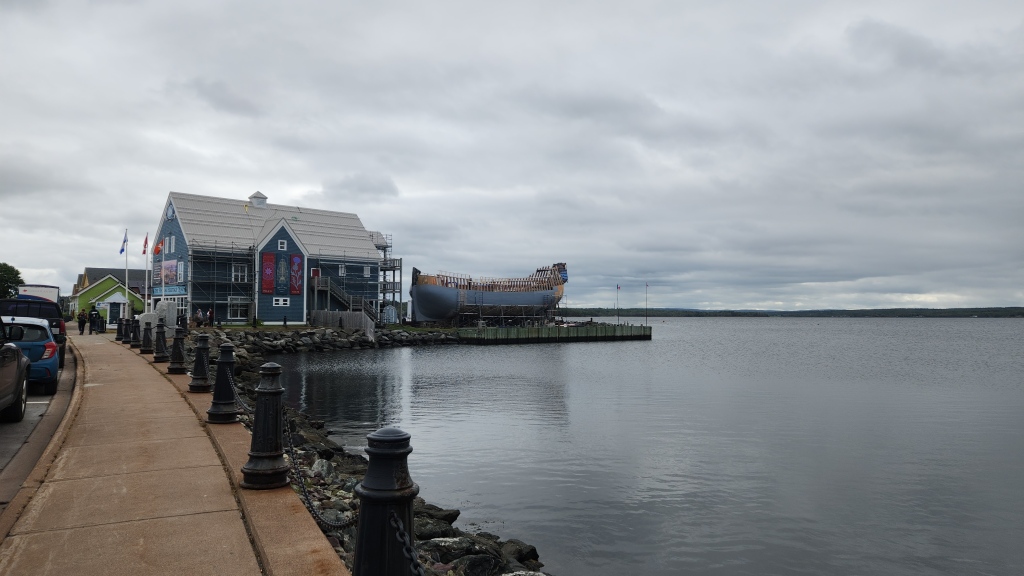
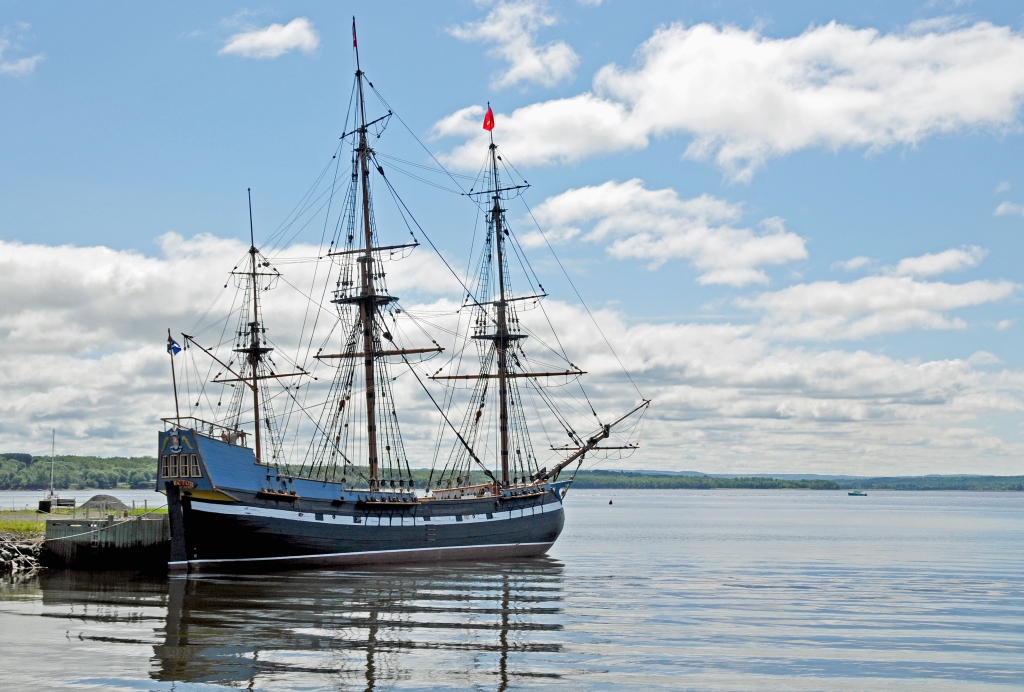
After the museum, we motored to the nearby ferry terminal and crossed the Northumberland Strait to Prince Edward Island (PEI). After a brief stop at a small tourist area in Wood Islands, we continued on to Charlottetown and the Hotel on Pownal (named for Pownal Street in Charlottetown) where we stayed for two nights. As you can see in the photo below, it was quite rainy during the ferry crossing, so I didn’t get any useful photos.

During our stop at Wood Islands, the sun came out, and I was wandering around looking for photo opportunities. Just as I was ready to snap a few, I was drenched by a cloudburst and rushed back to the bus (if you can call my ungainly old-man gait “rushing”), and then the sky cleared again. I took this as a sign to give up on photos for the day, so you’ll just have to trust me that the scenery on PEI was quite lovely. I’ll also note that, following the changeable and often rainy conditions up to this point, the weather was fantastic for the remainder of the trip.
Here’s a map of the day’s travels:
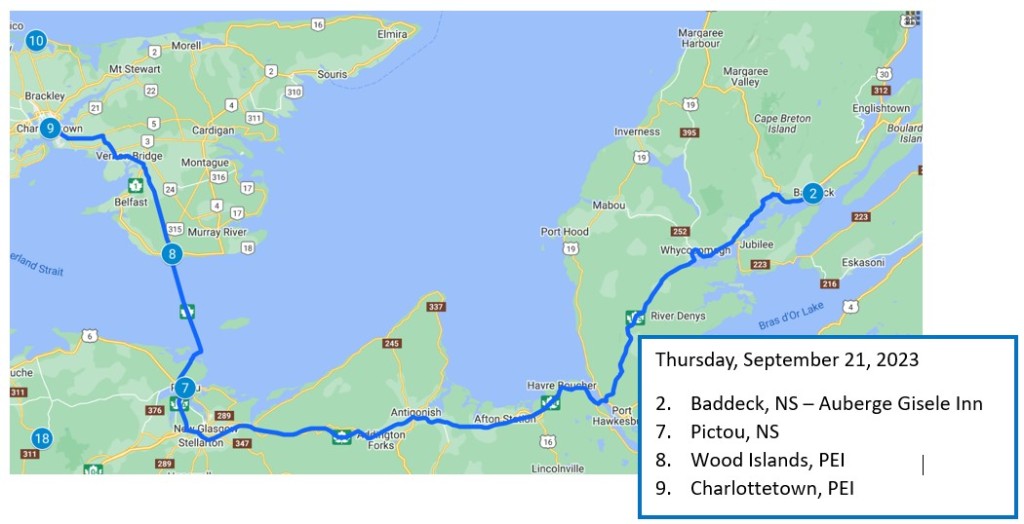
Friday, September 22, 2023: On Friday morning, we joined the other tour participants for breakfast at the hotel at 8 AM, and then attended an excellent lecture on the history of PEI and Charlottetown by a man named Cameron Macdonald (it seems that a huge percentage of the people on PEI are named Macdonald). We learned that the island’s cultural heritage is a mix of First Nations, French, English, Irish, and Scottish. Archeologists have found evidence of Mi’kmaq settlements that date back thousands of years, and the early French settlers enjoyed very good relations with the Mi’kmaq people. Not so much so with the English, whom they opposed in the so-called French and Indian War, and perhaps not so much with the subsequent Scottish and Irish immigrants who flocked to the island after the English defeated the French and their Native allies.
Interestingly, our lecturer (and virtually all of the guides at the various sites on the tour – in Nova Scotia, PEI, and New Brunswick) took pains to explain that the places we visited are “unceded lands of the Mi’kmaq.” So, even though the lands were taken by the immigrants, current Canadian policy is to acknowledge that fact rather than ignore it or try to pretend otherwise in the vein of many US politicians. When I asked one of the guides if there were any discussions of reparations within Canada, she said no, but agreed that recognition of history is at a minimum the first and proper thing to do.
Following the lecture, we joined the guide for a walking tour of Charlottetown, during which he regaled us with stories such as the grisly, twice-botched execution of a man convicted of murdering a drunken man who had attacked him while walking in the street with his fiancée. The fiancée served as a prosecution witness when she learned that he already had a wife back in Scotland (or wherever he was from – I’m a little foggy on the details). At any rate, after the debacle, public executions were banned, though the gallows remained until the 1940s. The site of the gallows is now a public park with swing sets and other play equipment, which were being enjoyed by a group of schoolchildren even as Cameron told us the story.
We learned that shipbuilding began on PEI in 1789 and became the driver of PEI’s economy by the 1860s. The population was primarily engaged in farming, fishing, and lumbering, and many local residents became wealthy through manufacture of furniture and farm implements. However, the shipbuilding industry began to decline with the onset of metal ships in the late 1870s and collapsed almost entirely by 1880, wiping out half the economy. Later, bootlegging liquor to the US during prohibition became a large underground economy.
One thing I found curious is that the vast majority of the historic displays – statues, plaques, artwork, etc. – are related to Charlottetown’s status as “the birthplace of Canadian Confederation,” because the first meeting at which the idea was discussed took place in Charlottetown on September 1, 1864. The meeting was originally planned to discuss a union of the Maritime provinces (Nova Scotia, PEI, and New Brunswick), but delegates from the province of Canada (present day Ontario and Quebec) got themselves invited and used the opportunity to push their own idea of Canadian Confederation. The Canadian delegates arrived on the ship SS Victoria, bearing a massive cache of champagne, and found no one to welcome them until a single man, PEI’s Colonial Secretary William Henry (W.H.) Pope, was eventually rowed out to the ship. Unfortunately, there were no rooms available at the local hotels because the first ever circus had come to PEI, and the town was swelled with visitors wanting to attend the circus. Only Sir John A. Macdonald, the man who eventually became Canada’s first Prime Minister, was given accommodations at Pope’s residence on the island; the other delegates had to bunk on the ship during the conference.
Despite the rocky start, the Canadian delegation wined and dined and charmed the others and pushed aside all thoughts of Maritime Union. Canadian Confederation did happen on July 1, 1867, after subsequent meetings in Quebec and London, in which PEI didn’t even participate. The island had no interest in joining the Confederation because the PEI economy was still roaring due to shipbuilding and strong trade with the US. It was only in 1873, when shipbuilding had begun to decline, that PEI joined the Canadian Confederation. Despite this reluctance to join, much less participate in the Confederation’s planning, Charlottetown is now hailed as its birthplace. I guess revisionist history does thrive in Canada, despite my earlier comments about acknowledging the taking of Native lands.
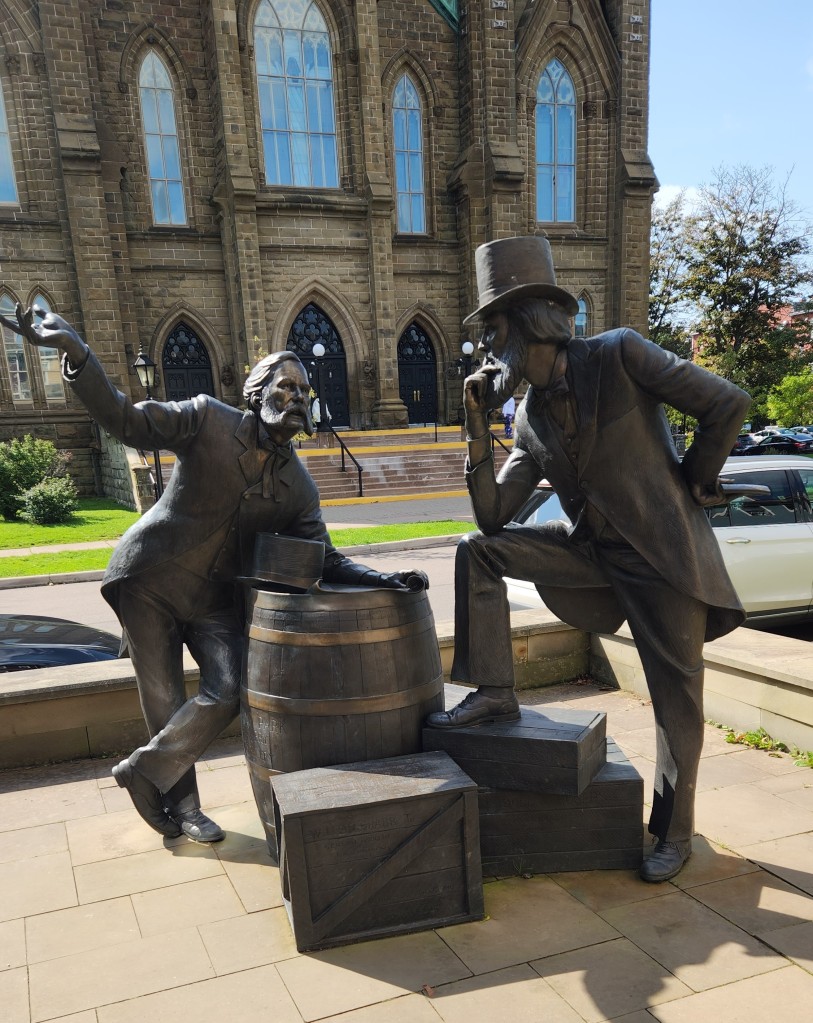
Some of the meetings took place at Province House, officially known as Legislative Assembly of Prince Edward Island, where the PEI Legislature has met since 1847. The building was constructed starting in 1843, and the architect did not have a sufficient budget to include many features, such as the facade and balcony which were added later. Due to this delay in adding a balcony, there is no door leading to it, so politicians need to climb through a window when they wish to give a speech to an outdoor crowd.
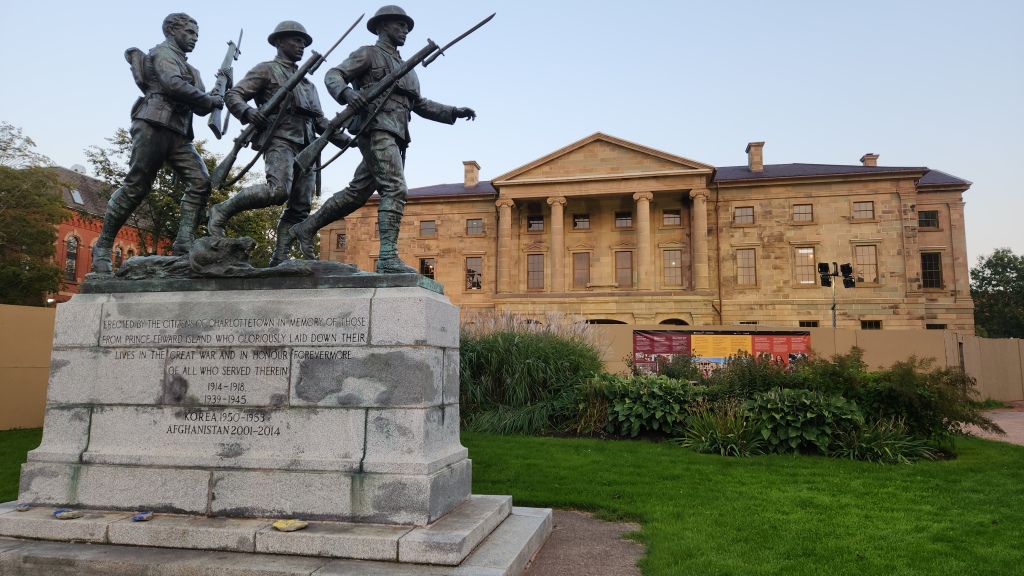
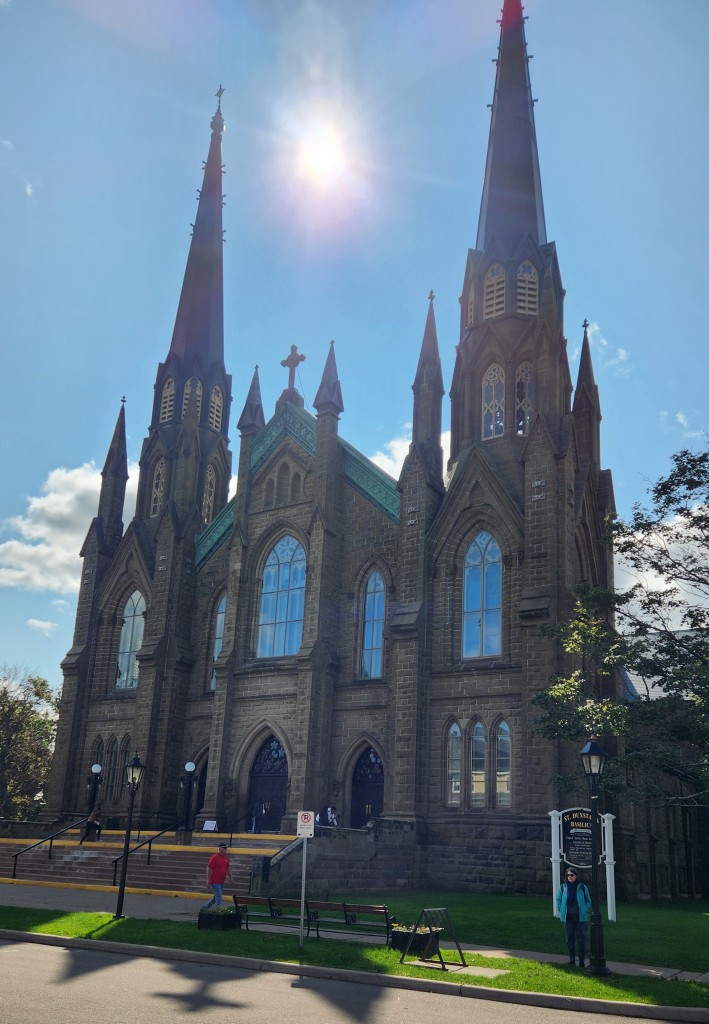
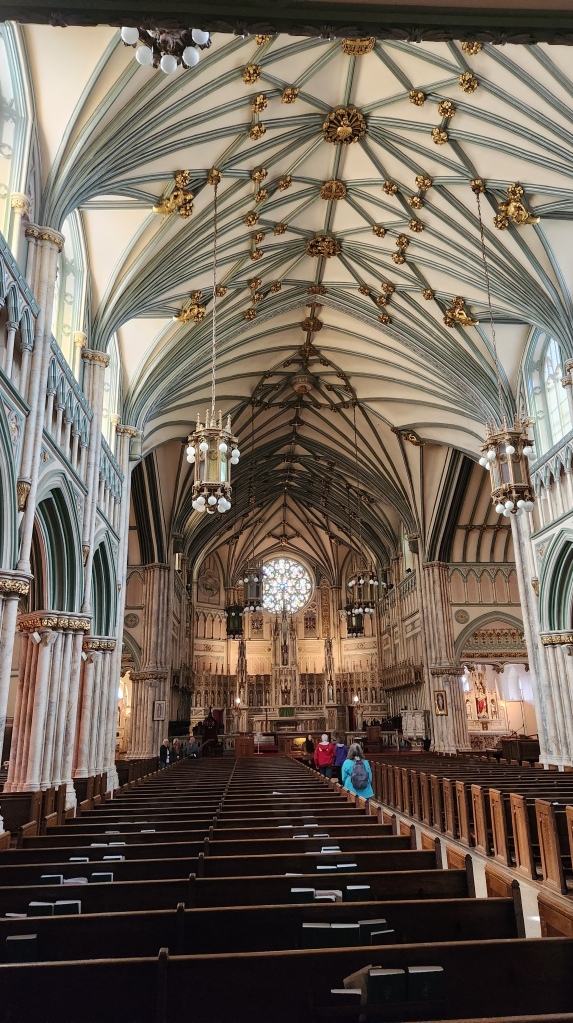
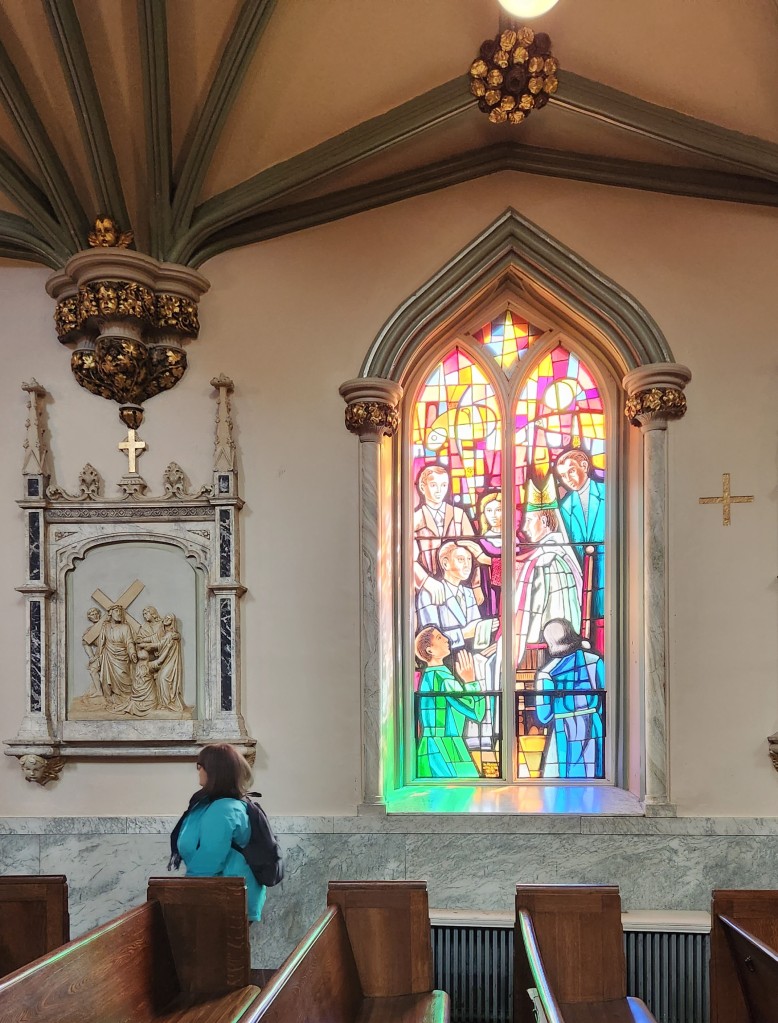
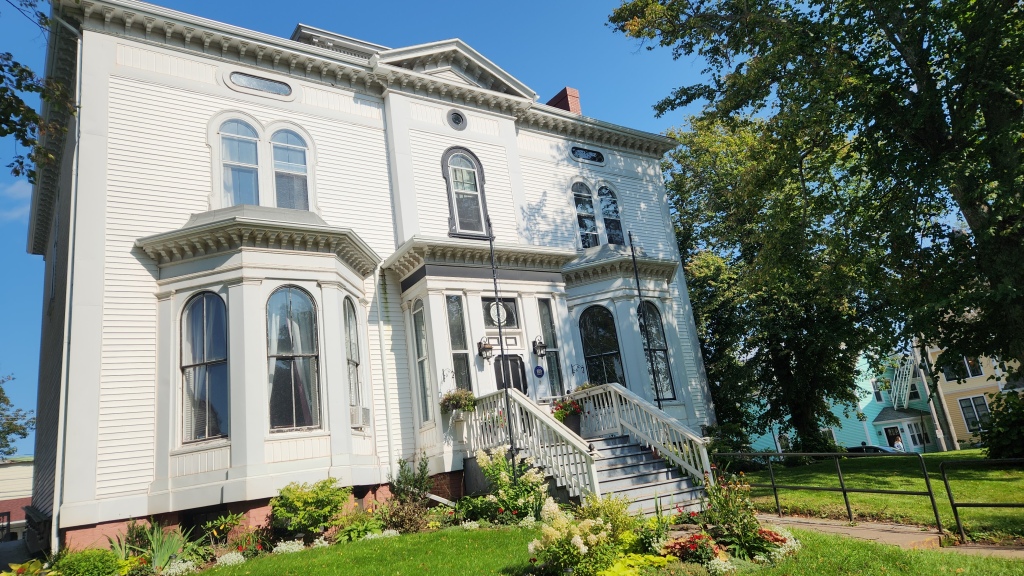


After the walking tour, we had a group lunch at a local restaurant called The Gahan House (named for John Gahan, a prominent merchant and importer of wines, teas, and groceries on PEI in the 19th century) and then spent the afternoon roaming the city on our own. (I had an earworm of “She Wears Short Shorts” going all afternoon, eventually realizing that it might have been inspired by our server’s attire.)
We ate dinner, again on our own, at Brit’s Fish and Chips and then attended a madcap comedy at the Confederation Centre of the Arts called The Play that Goes Wrong. It was great fun and a nice way to end our time in Charlottetown.
Here’s a map of the day’s travels:
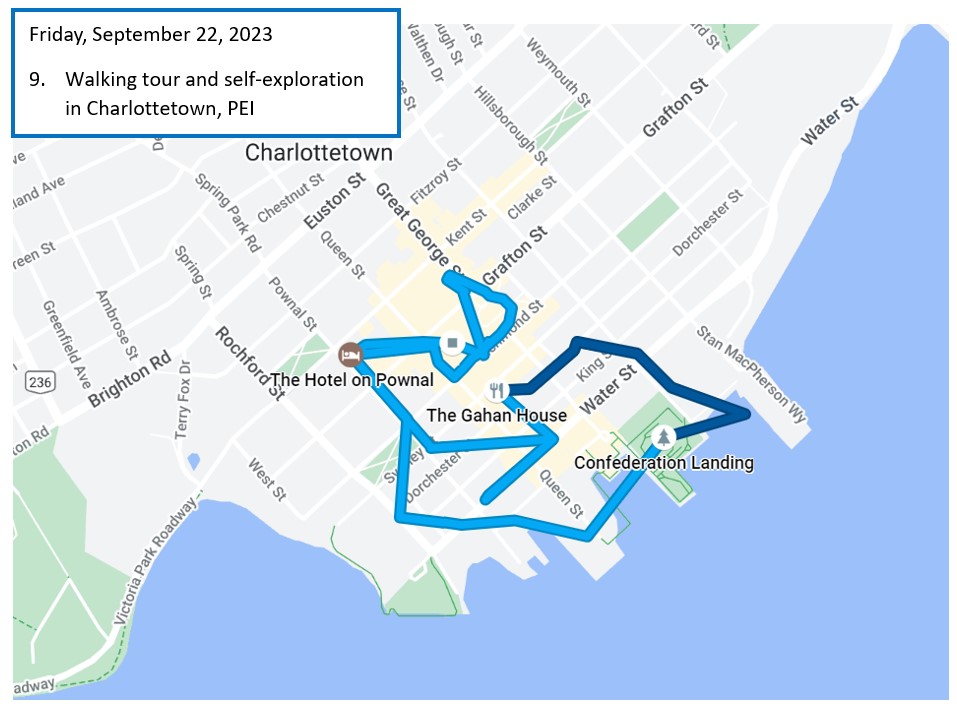
Saturday, September 23, 2023: On Saturday morning, we checked out of the Hotel on Pownal after breakfast and headed for the north side of the island. Our first stop was at the Prince Edward Island National Park. Known for its diverse habitats including forests and wetlands, the park provides a home for a variety of plants and animals, and is popular for its beaches, sandstone cliffs, sand dunes, barrier islands, and sand pits. The coastal area is inhabited by the endangered Piping Plover, whose nesting sites are protected. The park is a dynamic system of shifting sand carried by wind and waves, and is the finest example of sand-dune ecosystems in Atlantic Canada.

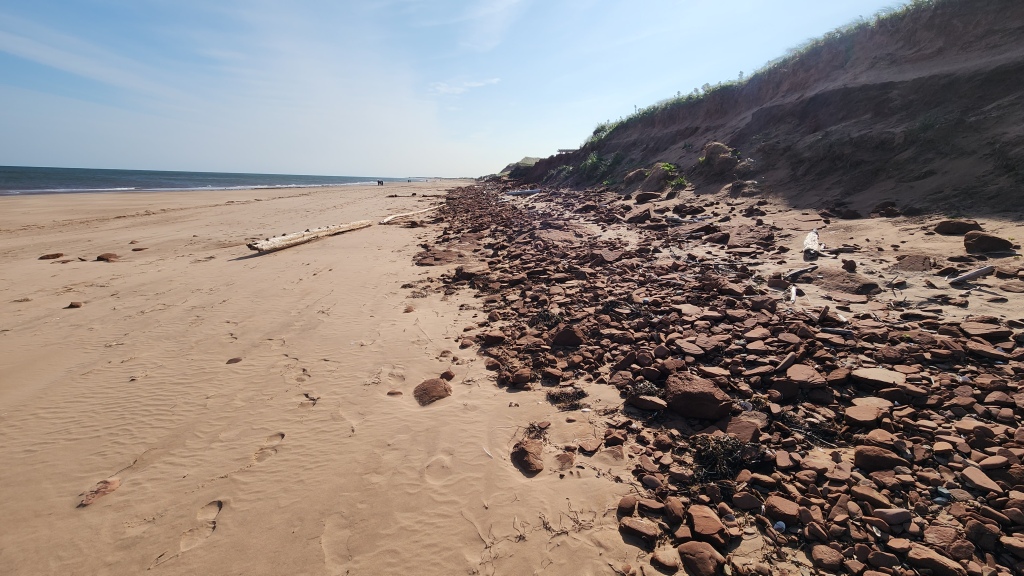
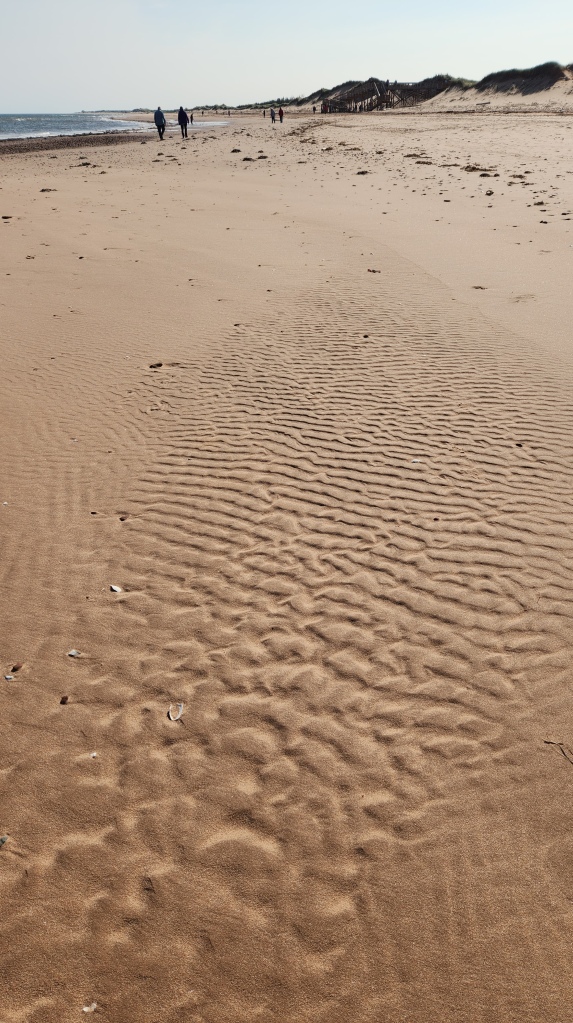
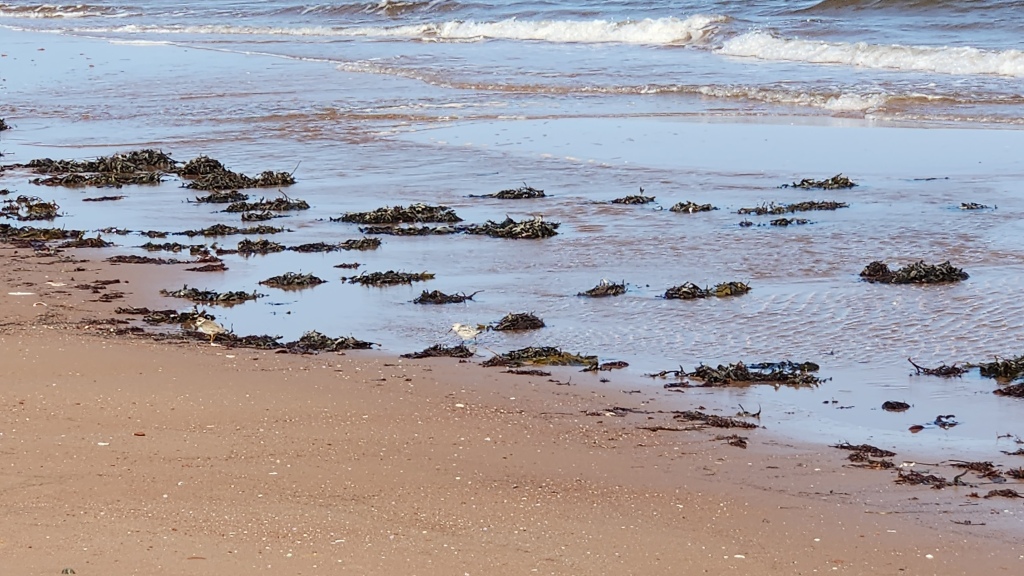
After the National Park visit, we stopped for lunch at the Prince Edward Island Preserve Company, whose grounds include a beautiful Peace Garden. We also bought some jam there, which will serve as a reminder of the lovely place we enjoyed.
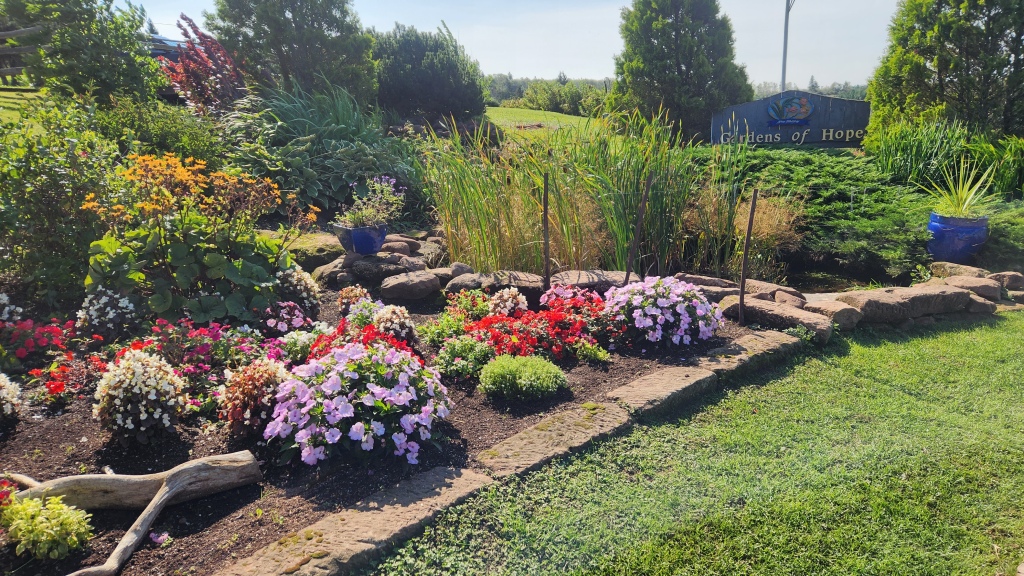

After lunch, we traveled to another part of the National Park, the Green Gables Heritage Place. This beautifully restored site includes: the MacNeill Family Homestead, which inspired the setting for Lucy Maud Montgomery’s famous Anne of Green Gables books, a well-tended garden, and two walking paths. One of the paths, the “Haunted Wood Trail,” winds some half-mile through the woods from the MacNeill homestead to the home Lucy Maud shared with her maternal grandmother, who was the local postmaster. I was very surprised to find that the site also includes a beautiful golf course — too bad I didn’t bring along my clubs!

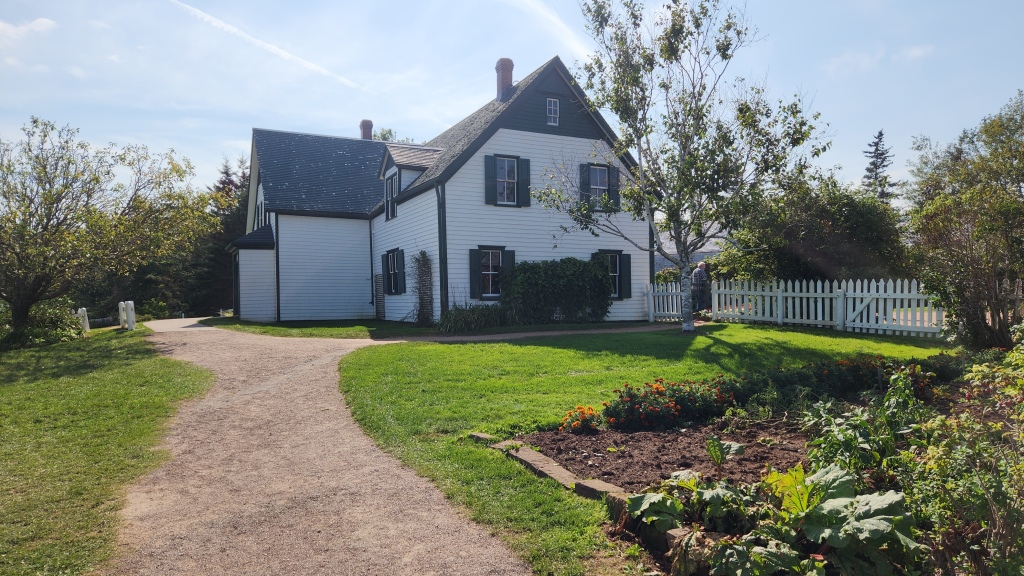
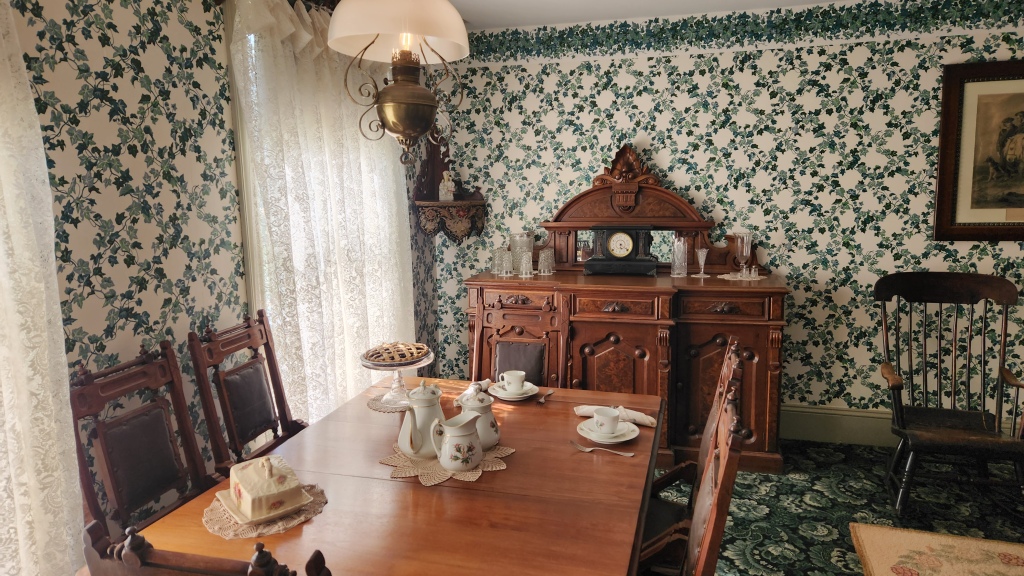
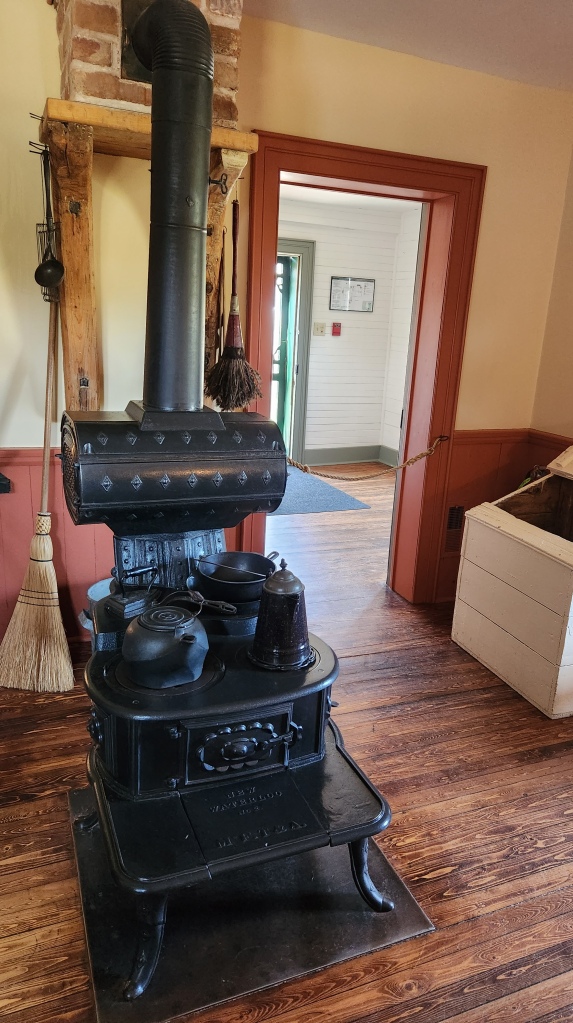

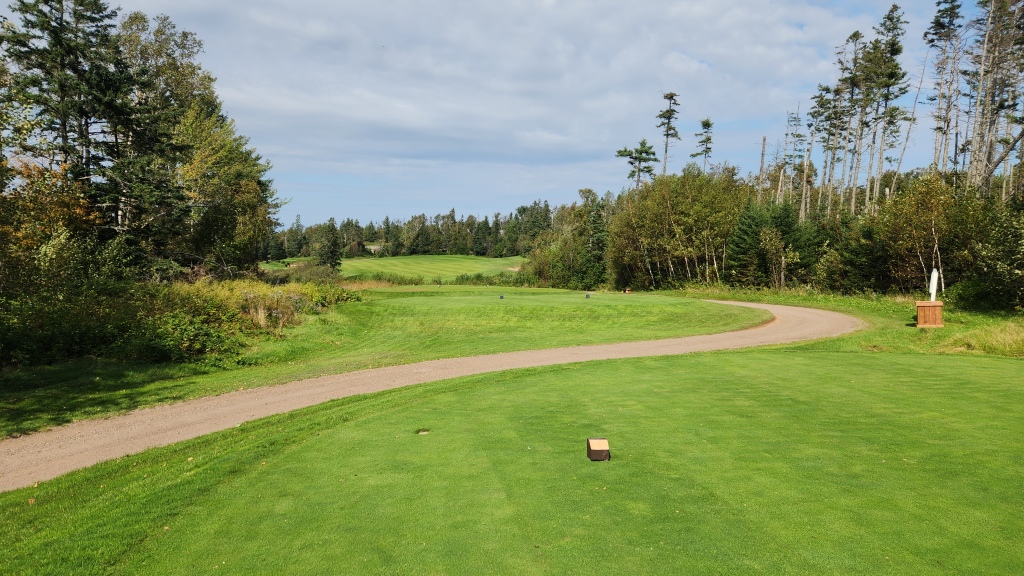

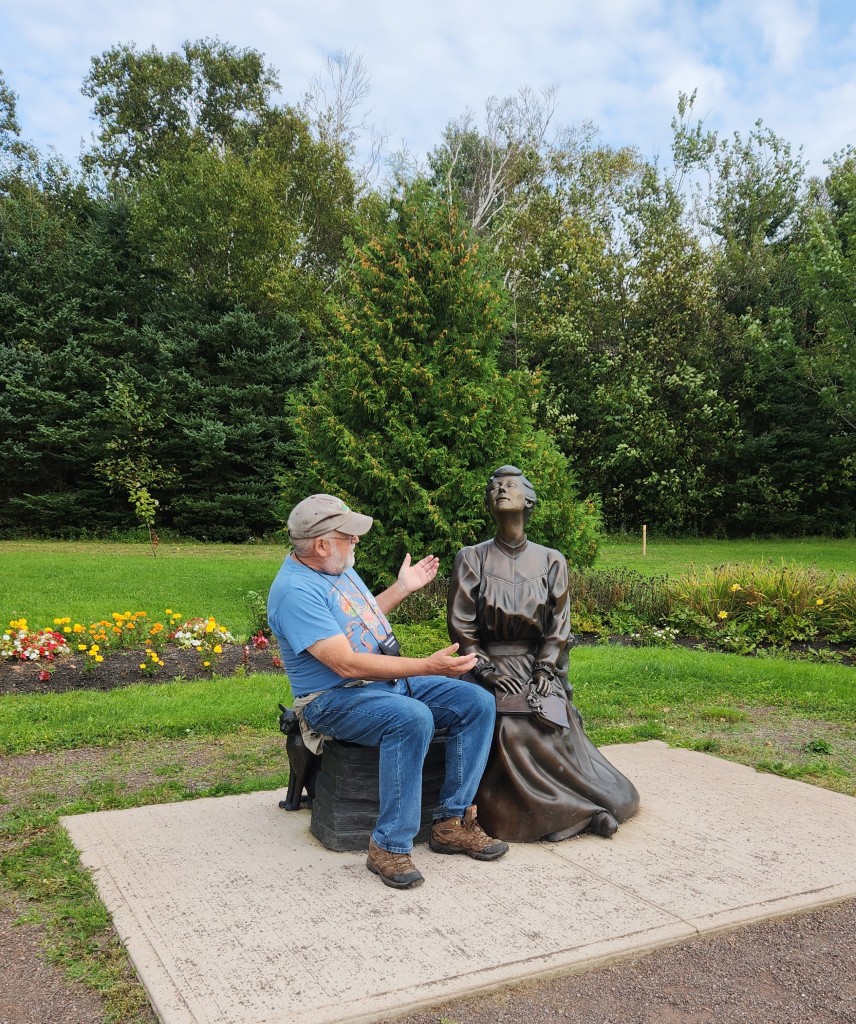
Then it was off on the bus again, with two quick stops before leaving the Island. We made a spur-of-the-moment stop at the Somerset Ice Cream Bar, our guide Derrick’s favorite ice cream shop, and then again at Borden-Carleton before traversing the Confederation Bridge to New Brunswick. The bridge is billed as the “longest bridge in the world over ice-covered waters” at 8 miles in length. The curved design adds to the bridge’s structural integrity, ensuring its capability to withstand the high winds that regularly occur on the Northumberland Strait.
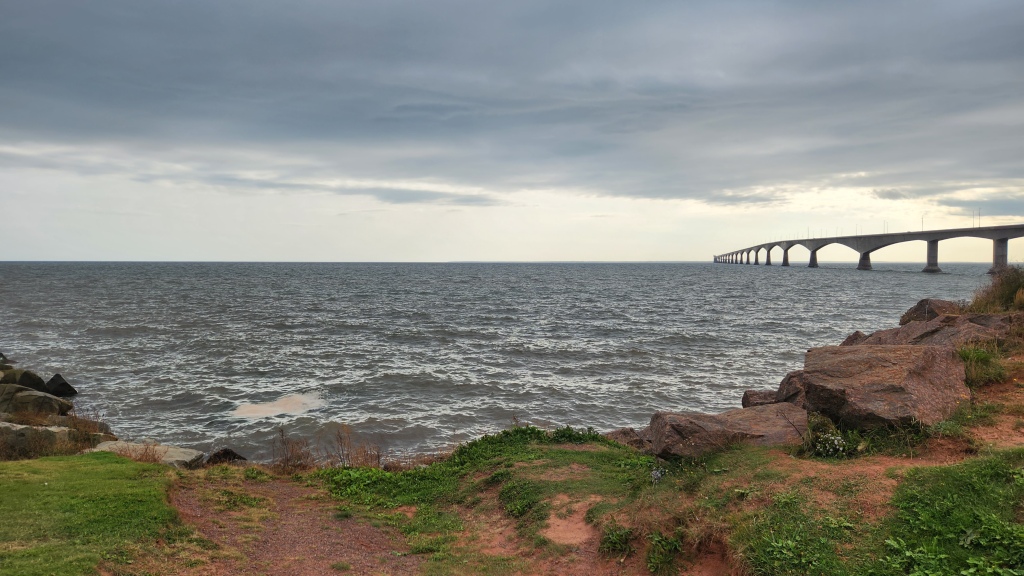
We ended the day in the city of Moncton, New Brunswick, at the Delta Hotel. Here’s a map of the day’s travels:
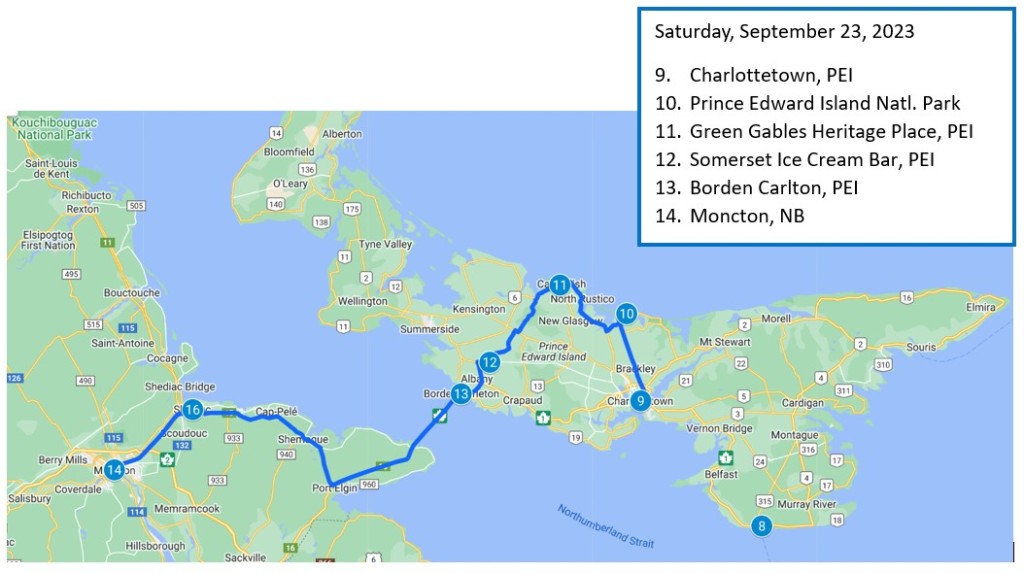
OK, I’ve done an awful lot of blathering, so I’ll stop now. In Part 3, I’ll cover Sunday, September 24, through the end of the trip on Wednesday, September 27.
Stay tuned …

I didn’t know there was a ferry to Prince Edward Island. I will definitely consider using that instead of just the bridge. Lots of good ideas of what to visit when we go next summer. Thanks
LikeLike